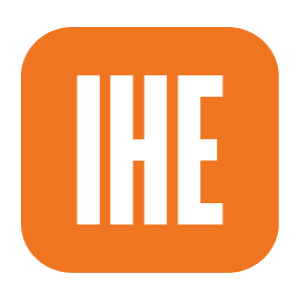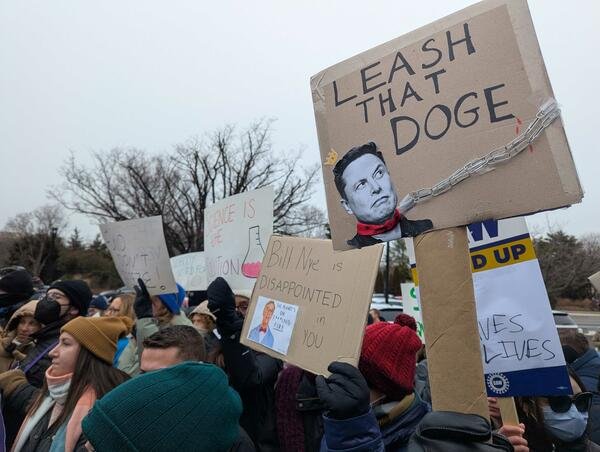Judge extends block on controversial NIH cuts
A federal judge Friday extended a temporary block on the National Institutes of Health’s plan to slash funding for universities’ indirect research costs amid a legal battle over the policy change.
The nationwide block, which U.S. District Judge Angel Kelley put in place Feb. 10 soon after a coalition of state attorneys general, research advocates and individual universities sued the agency, was set to expire Monday. But it will now remain in place until Kelley has time to consider the arguments the plaintiffs and NIH presented at a hearing Friday morning.
It’s unclear when Kelley will rule. But after the two-hour hearing, she said she certainly “has a lot of work to do” to before making a decision.
“This case is not about whether as a policy matter the administration can target waste, fraud and abuse,” Katherine Dirks, an attorney for the Massachusetts attorney general’s office, told the judge during the hearing. “It’s contrary to the regulations which govern how these costs are determined and how these payments are disbursed. If there were an intention on the administration’s part to change the mechanism by which those occur, there’s a process for it—a statutory process and a regulatory process. Neither of those were followed here.”
But the NIH’s legal team said the agency has the right to unilaterally cap reimbursements for costs related to research—such as hazardous waste removal, facilities costs and patient safety—at 15 percent.
“This is not cutting down on grant funding,” said Brian Lea, a lawyer for the NIH, said at Friday’s hearing. “This is about changing the slices of the pie, which falls squarely within the executive’s discretion.”
Counsel for the plaintiffs, however, argued that the policy is unlawful and, if it’s allowed to move forward during a protracted litigation process, will cause “irreparable harm” to university budgets, medical breakthroughs and the patients who may not be able to enroll in clinical trials as a result.
“A clinical trial is for a lot of people a last hope when there’s not an FDA–approved medicine that will treat their condition. Any minute that they’re not enrolled in that trial brings the risk of irreparable harm,” said Adam Unikowsky, an attorney for the plaintiffs. “Part of these institutions’ mission is serving these patients, and this cut will irreparably harm their ability to fulfill that mission.”
Since 1965, institutions have been able to periodically negotiate their reimbursement rates directly with the federal government; university rates average about 28 percent. However, rates can vary widely depending on factors such as geographic cost differences and the type of research, and some institutions receive indirect reimbursement rates of more than 50 percent of their direct grants.
Although the NIH argued in court that indirect costs are “difficult to oversee” as a justification for cutting them, the plaintiffs refuted that claim, pointing to a complex negotiation process and regular audit schedule that’s long been in place to ensure the funds are being used to support NIH research.
In fiscal year 2024, the NIH sent about $26 billion to more than 500 grant recipients connected to colleges—$7 billion of which went to indirect costs.
Saving or Reallocating $4B?
This isn’t Trump’s first attempt to cap indirect costs, which Elon Musk—the unelected billionaire bureaucrat overseeing the newly created Department of Government Efficiency—recently characterized as a “rip-off” on X, the social media site he owns.
In 2017, Congress rebuked President Trump’s attempt to cap indirect costs, and it has written language into every appropriations bill since specifically prohibiting “deviations” from negotiated rates. Given that, Kelley asked the Trump Administration’s legal team, how in his second term, Trump “can unilaterally slash these previously negotiated indirect cost rates which Congress prevented him from doing previously?”
“The money that is saved—it’s not being saved, it’s being reallocated—will be taken from indirect costs and filed into new grants that will be using the same funding formula,” said Lea, who told the judge he was using air quotes around the word saved. “The money is not being pocketed or being shipped somewhere else. It’s being applied back into other research in a way that best fits NIH and what will best serve the public’s health.”
But Lea’s claims that the money will simply be reallocated contradicted the NIH’s own social media post from Feb. 7, which said the plan “will save more than $4B a year effective immediately,” and Kelley asked for an explanation.
In response, Lea said the NIH’s “tweet was at best sort of a misunderstanding of what the guidance does.”
The Department of Health and Human Services, which oversees the NIH, did not immediately respond to Inside Higher Ed’s request for comment on whether it plans to issue a widespread public correction on social media and its other platforms to clarify its policy and inform taxpayers that their plan to cap indirect costs is not intended to save them any money. As of Friday afternoon, the post was still up on X.
Layoffs, Canceled Clinical Trials
But Unikowsky, an attorney for the plaintiffs, said that funneling money away from indirect costs would still harm the nation’s esteemed scientific enterprise, which is grounded in university research.
“Indirect costs are real costs associated with doing research,” said Unikowsky, pointing to the California Institute of Technology as an example. The institute spent $200 million to build a state-of-the-art laboratory and is counting on indirect cost reimbursements from the NIH to help pay off the debt it incurred to construct it.
“There’s going to be a hole in Cal Tech’s research budget” and the “money is going to have to come from somewhere else,” Unikowsky added.
Unikowsky also listed nine different institutions, including the Universities of Florida, Kansas and Oregon, that have said they will have to lay off skilled workers who support medical research, including nurses and technicians, if the cap goes into effect.
Lea, the lawyer for the Trump Administration, countered that destabilizing university budgets doesn’t amount to immediate and permanent harm warranting injunctive relief on the rate caps.
“That’s not an irreparable thing, or else every business that’s in a money pinch could just come in and get an injunction,” he said. “I understand that many institutions would prefer to use endowments and tuition for other purposes, but unless they’re barred from doing so—and the inability to do so would cause some non-monetary harm—that’s not irreparable harm.”
Although Kelley gave no indication on when or how she plans to rule, some university leaders who listened to the hearing came away optimistic that she’ll favor the plaintiff’s arguments.
“We look forward to the judge’s ruling,” said Katherine Newman, provost at the University of California which is one of the universities suing the NIH. “[We] maintain our position that the Administration’s misguided attempt to cut vital NIH funding is not only arbitrary and capricious but will stifle lifesaving biomedical research, hobble U.S. economic competitiveness and ultimately jeopardize the health of Americans who depend on cutting-edge medical science and innovation.”
You may be interested

2 Virginia Beach police officers shot and killed during traffic stop
new admin - Feb 22, 2025Two police officers in Virginia were shot and killed during a traffic stop late Friday night, authorities said.The Virginia Beach…

Lost Records: Bloom & Rage review
new admin - Feb 22, 2025The fuzz of the cathode-ray tube (CRT) monitor, alongside static grains and flickering scanlines, is a touchstone for ’90s-era nostalgia.…

Michigan State takes control of Big Ten with 75-62 win over Michigan
new admin - Feb 22, 2025[ad_1] Jase Richardson scored 21 points and Tre Holloman had 18, leading No. 14 Michigan State to a 75-62 win…





































